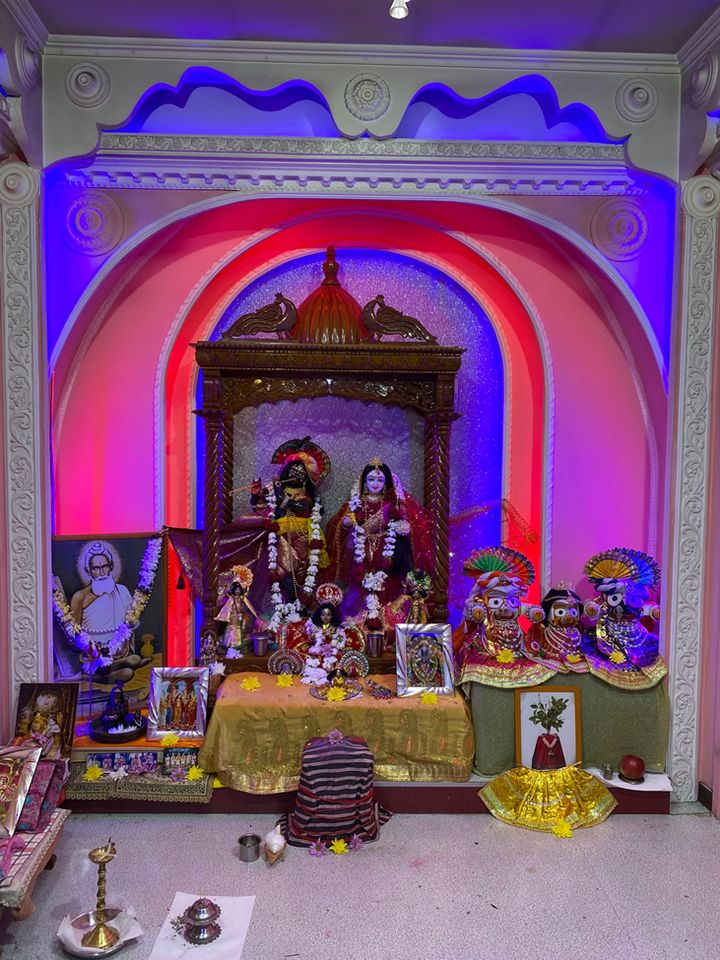Luoghi religiosi a Roma: storia e memoria del patrimonio sociale e culturale delle minoranze
Il progetto “Luoghi religiosi a Roma: storia e memoria del patrimonio sociale e culturale delle minoranze” ha come obiettivo quello di mappare la storia e la memoria del patrimonio religioso plurale di Roma, a partire dai luoghi di culto che animano il territorio. Sono i luoghi delle cosiddette minoranze religiose che sono attive su differenti piani: culturale, sociale e economico.
Il nostro progetto sui luoghi delle minoranze è realizzato nell’ambito del progetto PNNR Cultural Heritage Active Innovation for Next-Gen Sustainable Society – CHANGES – PE00000020 PNRR Missione 4 – Componente 2 – Investimento 1.3 Finanziato dall’Unione europea – NextGeneration EU CODICE CUP: F83C22001650006 Spoke 8 – Sustainability and Resilience of Tangible Cultural Heritage e dalla Fondazione Bruno Kessler di Trento.
Lo spoke 8 del Progetto Changes, Mapping Tangible Cultural Heritage in Rome (TCHR), ha come oggetto di interesse il patrimonio culturale presente sul territorio di Roma, di cui esplora le rappresentazioni e i significati.

Religious Places in Rome: History and Memory of the Social and Cultural Heritage of Minorities
The project “Religious Places in Rome: History and Memory of the Social and Cultural Heritage of Minorities” aims to map the history and memory of the plural religious heritage of Rome, starting from the places of worship that enrich the territory. These are the places of various religious minorities active on different levels: cultural, social, and economic.
Our project on minority religious places is carried out within the framework of the PNRR Cultural Heritage Active Innovation for Next-Gen Sustainable Society – CHANGES – PE00000020 PNRR Mission 4 – Component 2 – Investment 1.3, funded by the European Union – NextGenerationEU, CUP CODE: F83C22001650006 Spoke 8 – Sustainability and Resilience of Tangible Cultural Heritage, and by the Bruno Kessler Foundation of Trento.
Spoke 8 of the Changes Project, Mapping Tangible Cultural Heritage in Rome (TCHR:), focuses on the cultural heritage present in the territory of Rome, exploring its representations and meanings.
Team
Maria Chiara Giorda (University of Rome Tre, Italy),
Angelica Federici (University of Rome Tre, Italy, Fondazione Bruno Kessler, Italy)
in collaborazione con Valeria Fabretti (Fondazione Bruno Kessler)
Contacts
Maria Chiara Giorda: mariachiara.giorda@uniroma3.it
Storymaps degli studenti del corso Religioni e Spazi urbani
- Chiesa valdese
Link identifier #identifier__17776-1https://storymaps.arcgis.com/stories/f82d78decfd54fd893e659586560a8fe - Tempio Scientology
Link identifier #identifier__149829-2https://storymaps.arcgis.com/stories/e049f65ec9744343b105513de5d46edf - Chiesa Cristiana Evangelica ‘Koinonia’
Link identifier #identifier__153913-3https://storymaps.arcgis.com/stories/de67bea992e947bbab090c7a543d1779 - Centro Zen ‘Anshin’
Link identifier #identifier__89644-4https://storymaps.arcgis.com/stories/b052ee54966249b8b6fc38df3fd97ed4 - Tempio Om Hindu Mandir
Link identifier #identifier__162490-5https://storymaps.arcgis.com/stories/e8a85839f55b4b3482a145aa3b0765d3 - Tempio mormone
Link identifier #identifier__73777-6https://storymaps.arcgis.com/stories/746e7d21d10c4cc1bad1a5c3e49b0b41 - Sinagoga
Link identifier #identifier__136296-7https://storymaps.arcgis.com/stories/a84befeea212437193450231aa838011 - Ecomuseo Casilino
Link identifier #identifier__98801-8https://arcg.is/iXu1G - Moschea al-Huda
Link identifier #identifier__43101-9https://storymaps.arcgis.com/stories/4dccbbb5759246c98f05be5a9edd9fa1 - La parrocchia ortodossa romena di Prima Porta
Link identifier #identifier__45439-10https://storymaps.arcgis.com/stories/4b451e988baa4211a7a236f1fda92e1e - Tempio Bahai
Link identifier #identifier__92125-11https://arcg.is/rGWrX2 - Santa Passera
Link identifier #identifier__18949-12https://storymaps.arcgis.com/stories/a779567504f4474883f42cb845818b09 - Soka Gakkai
Link identifier #identifier__70213-13https://arcg.is/110KTP - Sikh Temple
Link identifier #identifier__60833-14https://arcg.is/15CS8u2 - Link identifier #identifier__13268-15Parrocchia della Nascita della Madre di Dio (.pdf)
Organizzazione del PANEL presso la EUARE di Palermo
Urban Religion and Cultural Heritage: Reassembling History and Plural Memory
Proponent: Federici A., Giorda M.C. Chair: Federici A., Giorda M.C.
Speaker: Bossi L., De Paolis I., Fabretti V., Federici A., Giorda M.C., Gruet B., Nardella C., Omenetto S., Pignotti C.
Link identifier #identifier__169132-16Link al panel
Religions, Cultural Memory and Heritage in the City: Reassembling a Plural Scenario
In contemporary European and US society, within the framework of UNESCO 2003 Convention on Cultural Heritage urban spaces, religious places, such as churches, synagogues, mosques, and temples, as well as informal spaces, such as gardens, parks, and secular buildings, are the foundation for constructing tangible and intangible religious heritage (oral traditions, collective memories, shared practices), However, in an increasingly multicultural and multireligious landscape, there is a glaring knowledge gap around the role of religious minorities in the sedimentation of cultural memories and heritage in the city.
Initiatives, events
- 25 novembre 2024 – Il patrimonio religioso nella storia e nella memoria urbana italiana [Link identifier #identifier__53456-17vedi locandina]
Publications
- Federici, Angelica, and Maria Chiara Giorda, eds. “Religions, Cultural Memory and Heritage in the City: Reassembling a Plural Scenario.” Link identifier #identifier__65429-18Religions. (2025)
- Giorda, Maria Chiara, ed. History and heritage of the Great Mosque of Rome, Link identifier #identifier__15823-19Historia Religionum, Special Issue 16 (2024)
- Giorda, Maria Chiara, and Silvia Omenetto, eds. 2025. Link identifier #identifier__11958-20Tra le Mura Romane: La Nascita delle Chiese Protestanti nell’Italia Risorgimentale. Rome: Claudiana Editore

